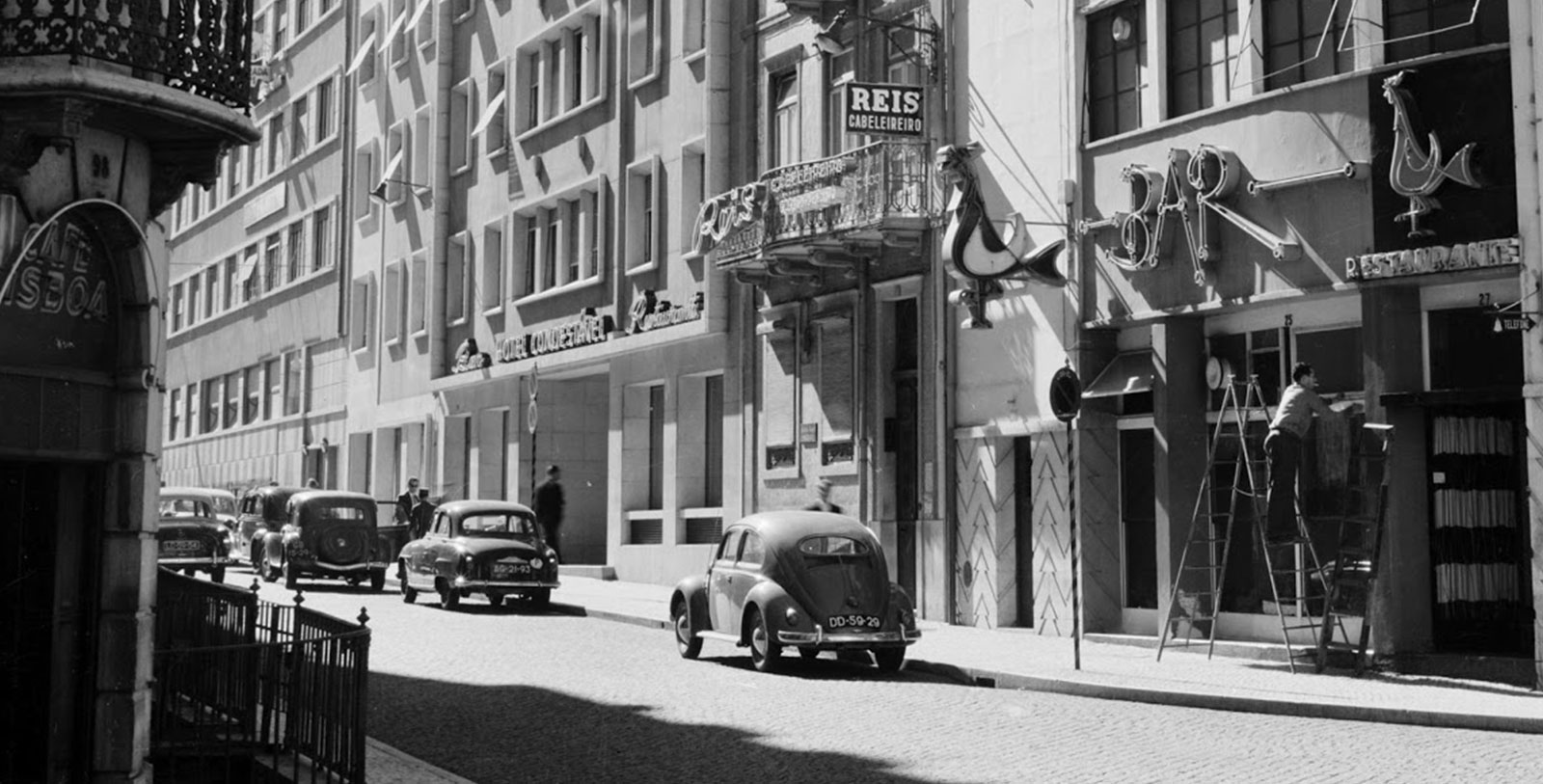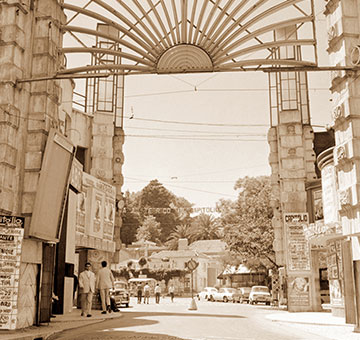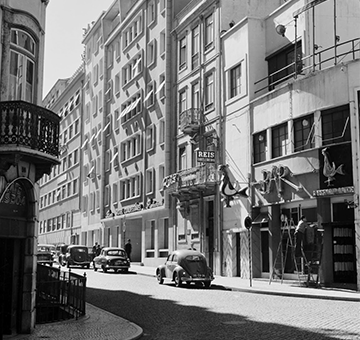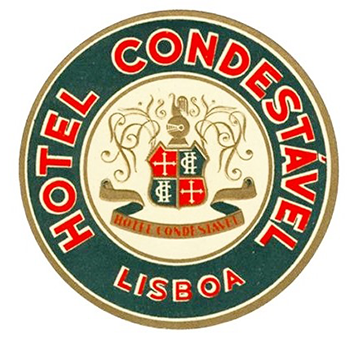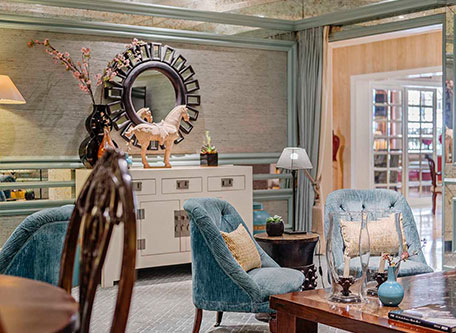Receive for Free - Discover & Explore eNewsletter monthly with advance notice of special offers, packages, and insider savings from 10% - 30% off Best Available Rates at selected hotels.
history
Discover the Hotel Lisboa Plaza, which has been family-run and operated since its debut in the mid-20th century.
Hotel Lisboa Plaza, a member of Historic Hotels Worldwide since 2022, dates back to 1954.
VIEW TIMELINEFamily-owned and operated for generations, the Hotel Lisboa Plaza has been a renowned holiday destination along the Avenida de Liberdade since the mid-20th century. When the hotel first debuted as the Hotel Condestável in 1954, the nearby Avenida de Liberdade was quickly cementing its status as one of the best vacation retreats in all of Lisbon. The site had specifically experienced a great proliferation of luxurious storefronts and restaurants that attracted an incredibly affluent, foreign clientele. The many public statues and squares that lined the thoroughfare had become cultural attractions in their own right, such as the iconic Praça do Marquês de Pombal (Marquis of Pombal Square). To cater to the new tourist population descending upon the area, aspiring hoteliers began to construct their own upscale hotels close to the road. The Hotel Lisboa Plaza was among the many locations to open within this environment, which offered spectacular services and elite amenities. But while most of the hotels eventually shuttered their doors over the following decades, the brilliant Hotel Lisboa Plaza managed to endure due to its unrivaled hospitality.
Now managed through a partnership with Lisbon Heritage Hotels, the Hotel Lisboa Plaza continues to maintain its prestigious status as one of Lisbon’s best retreats. In fact, the owners have taken its preservation very seriously, as they have instituted dozens of meticulous restorations over the years. Indeed, the most recent series of renovations occurred in 2015, in which every historical aspect of the building was completely restored back to their former glory. As with the other hotels affiliated with Lisbon Heritage Hotels, cultural travelers today are guaranteed to appreciate the building’s elite service and beautiful historical architecture. They will also enjoy the hotel’s proximity to the Avenida de Liberdade and the numerous landmarks that reside nearby, too. (The Avenida de Liberdade is also a significant contributing area to Lisbon’s renowned UNESCO World Heritage Site.)
-
About the Location +
While Lisbon today is among the most historic metropolises in Europe, its origins are a bit of a mystery. Historical evidence is scant regarding its founding, although recent archeological findings suggest the region was inhabited as far back as the Iron Age. Additional excavations in the heart of Lisbon have uncovered more artifacts that indicate a Phoenician presence dating back to the 12th century B.C. Those objects have enabled scholars to determine that Lisbon most likely formed as a Phoenician trading post that existed under the name “Olisipo.” Even though no record specifically cites the reasoning behind the title, some think that it was an homage to the legendary Greek hero Odysseus. Nevertheless, historians further believe that the village gradually grew into a massive city called “Felicitas Julia” following the Roman conquest of the Iberian Peninsula. The community served as the main bastion of power for the Roman Empire in the area, which developed imposing fortifications along the local waterway, the Tagus River. Those battlements specifically safeguarded the deep-water port at the river’s mouth, which had begun to flourish under Roman rule. But when the Roman Empire collapsed during the 5th century A.D., the settlement passed through various hands before finally getting captured by the Visigoths. They, in turn, lost control of the city to the Moors several centuries later. The Moors subsequently reinforced the city’s defenses, transforming the locale into an imposing bastion against European knights who wished to take it back. Their work reinforcing Lisbon was masterful, as the fortifications were able to blunt numerous attacks for decades.
In 1147, the Moorish defenses were put to the ultimate test when the Portuguese king Afonso I attempted to seize the city amid the Second Crusade (and the greater Portuguese Reconquista). At the head of a massive army, Afonso I managed to wrestle control from the Moors following a dramatic four-month-long siege. Now known as “Lisbon,” the city quickly emerged as an important commercial center in the nascent Kingdom of Portugal. Despite its rising economic status, the Portuguese Royal Family held its official court several hundred miles away in Coimbra. But King Afonso III decided to relocate the royal residence to Lisbon in the mid-13th century, thus making it the capital of the entire kingdom. Lisbon thrived due to its newfound political significance, with successive generations of Portuguese monarchs investing heavily in its continued development. Some of the most notable projects involved King Dinis I’s creation of the Studium Generale and the massive renovations that King Fernando I did to the ancient Castelo de São Jorge. Perhaps the greatest work to transpire occurred during the reign of King Manuel I, who oversaw the widespread urbanization of Lisbon. Among the best structures that he commissioned at the time included the Torre de Belém (Belém Tower) and the Paço da Ribeira (Ribeira Palace). Manuel had obtained much of the wealth to finance the construction via the great riches that had begun to flow into Lisbon’s harbor from Portugal’s newly created distant colonies. The amount of trade conducted became so great that Lisbon eventually established itself as one of Europe’s greatest cities by the end of the 16th century.
This renaissance came to an unfortunate end when a massive earthquake caused catastrophic damage throughout the city in 1755. Undeterred, the local residents banded together to rebuild most of Lisbon in a matter of years. Spearheading the revitalization efforts was Sebastião José de Carvalho, Portugal’s prime minister. He worked closely with a team of architects to redesign much of Lisbon’s historic districts, creating many new buildings in a simple, yet gorgeous style of Baroque architecture that became known as “Pombalino.” (The moniker was an homage to Carvalho, whose royal title was the Marques de Pombal.) Lisbon resumed its place as a prominent European community for many years, even as war, political instability, and economic depression periodically impacted Portugal in the 19th and 20th centuries. In fact, the city only continued to grow, as epitomized by the creation of a magnificent new thoroughfare that bisected the heart of Lisbon called the “Avenida de Liberdade.” (The boulevard specifically debuted at the height of Europe’s Belle Epoque period in the 1890s.) Following the country’s integration into the European Union at the start of the 21st century, Lisbon has solidified its standing as an elite, internationally renowned metropolis. Its rich character has inspired thousands of contemporary travelers to visit every year, placing it on par with other popular destinations throughout the Mediterranean Basin like Venice and Rome. Indeed, Lisbon’s many fascinating historic sites—including the Torre de Belém, the Paço da Ribeira, and the Castelo de São Jorge—have been essential toward maintaining this incredible international interest. Most of those historic sites have also contributed to the creation of Lisbon’s spectacular UNESCO World Heritage Site, which encompasses large tracts of its downtown core.
-
About the Architecture +
Designed by Lucínio Cruz during the mid-20th century, the Hotel Lisboa Plaza displays some of the finest Mid-Century Modern architecture in Lisbon. An offshoot of the earlier International and Bauhaus movements, Mid-Century Modern essentially sought to portray a seemingly contemporary, futuristic aesthetic that reflected the popular concepts of civil progress. Professional architects mainly utilized the style from the 1930s to the 1960s, when Western society was rapidly undergoing huge transformations—both social and technological. It seemed to many at the time that the country’s way of life was truly on an upward path of mobility. Architects like Cruz thus embraced the design ideals of function, simplicity, and rationality in order to create sleek-looking structures that possessed a communal purpose. As such, Mid-Century Modern designs made explicit use of vertical, flat lines and irregular rectangular shapes so to convey a lack of formality. Overt ornamentation was typically abandoned, too, as monochromatic brickwork, steel, and concrete served as the essential building blocks for the exterior. Inside, most of the rooms were subdivided into split levels, giving a sense that the structure had undergone as significant change in elevation. Modernist buildings also featured wide, open spaces filled with natural light that represented practicality and comfort. Large widows often served as the primary way in which the architects achieved such a feature. The introduction of spacious windows even sought to better incorporate nature into the overall design, making the surrounding landscape seem as if it were part of the building itself.



















